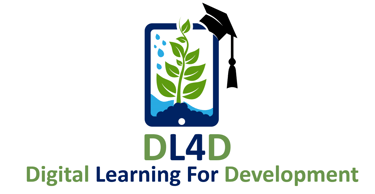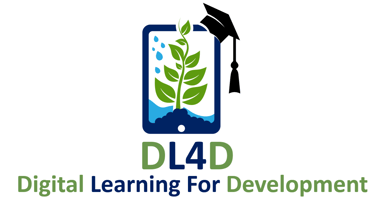
Generative Artificial Intelligence
Generative AI is revolutionizing industries by enabling machines to create new content, such as text, images, music, and even code, based on learned patterns. This technology has vast potential to enhance creativity, streamline processes, and drive innovation across fields like education, healthcare, and finance. Its ability to think creatively and adapt to complex tasks makes it an essential tool for the future of technology and innovation.

What is Generative AI?
Generative AI, also known as generative artificial intelligence, is the application of Artificial Intelligence to generate new content such as text, photos, audio, music, and videos.
Generative AI is fueled by basis models (big AI models) capable of multitask and do non-standard tasks such as summarization, Q&A, categorization, and others. Furthermore, with barely any instruction needed, foundational models can be customized for specific use cases with minimal sample data.
How does Generative AI works?
Generative AI uses a machine learning (ML) model to identify relationships and patterns in a dataset of human-created information. It then applies the acquired patterns to create new material.
The most common approach for training a generative AI model is supervised learning, which involves providing the model with a set of human-created content and accompanying labels. It subsequently learns to produce content that is similar to human-created information and tagged the same way.
Creating a generative AI model has been a massive task, with only a handful of well-resourced tech heavyweights attempting it. OpenAI, the business behind ChatGPT, prior GPT models, and DALL-E, has raised billions of dollars from well-known donors. DeepMind is a division of Alphabet, Google's parent company, and Meta has dabbled in generative AI modeling with its Make-A-Video offering. These firms hire some of the world's top computer scientists and engineers.
Output of an AI Generative Model
Generative AI model outputs can be identical from human-generated content, or their similarities can appear unsettling. The outcomes are determined by the model's quality—as we've seen, ChatGPT's outputs look substantially superior to those of its predecessors—as well as the model's fit with the use case, or intake.
In ten seconds, ChatGPT can write what one observer described as a "solid A-" essay comparing Benedict Anderson and Ernest Gellner's views of nationality. It also created a well-known paragraph on how to eliminate a sandwich with peanut butter from a VCR in the style of the King James Bible. Image-generating AI models, such as DALL-E 2, may generate unusual, lovely pictures on request, such as Raphael's painting of a Madonna and child enjoying pizza.
Some generative AI models can create code, video, music, and simulations of businesses. However, the results are not always accurate—or suitable. When Priya Krishna asked DALL-E 2 to create an image for the Thanksgiving meal, it came up with a scene in which the turkey was adorned with entire limes and served with a bowl of what looked to be guacamole. ChatGPT, for its part, appears to struggle with counting or solving fundamental algebra issues, let alone conquering the gender biased and racist bias which hides in the a sense of the internet and society as a whole.
Generative artificial intelligence results are precise arrangements for the data required for training the algorithms. Since the quantity of data utilized to train these methods is so massive—as previously stated, GPT-3 was developed on 45 terabytes of text data—the models may seem to be "creative" in their results. Furthermore, the models typically contain random components, which allows them to generate an array of outputs from a single input demand, making them appear more realistic.
Use cases of Generative AI
Generative AI has the ability of creating realistic visuals, animations, and audio for graphic design and video marketing purposes. Many generative AI providers also provide speech synthesis and AI avatars, allowing you to produce marketing films without using actors, video equipment, or video editing skills.
AI-generated video marketing products were among the first to create content in multiple languages using artificial intelligence. Although video avatars, in specific, will require some effort until they can convincingly substitute human speakers, this breakthrough is fascinating, particularly for multinational organizations that must send out video marketing or messages of communication in languages they do not know.
Entertainment Media Generation
As AI-generated imagery, animation, and audio get more lifelike, this kind of technology is being utilized for producing graphics for movies and video games, audio for music and podcast production, and people for virtual storytelling and VR experiences. For producing credible material, many of these techniques don't involve a human to go on camera, edit pictures, or even talk.
Many tech experts expect that generative AI will account for almost all of upcoming film content and script production, but creatives are naturally skeptical of that notion. In the field of entertainment, these techniques are now utilized mostly to complement current screenplays and produce more dynamic non-player characters (NPCs).
Coaching and Performance management
Generative AI can be applied in a variety of corporate and coaching contexts. For instance, contact center call documentation and summary, when paired with sentiment analysis, can provide management with the knowledge required to evaluate existing client service rep reach conversations and teach personnel on how to make improvements.
Generative AI coaching along with performance management systems can benefit both supervisors and their direct reports. Managers can utilize generative AI tools to guide and structure evaluations of performance for the staff, while employees can use conversational AI tools to gain feedback on their achievements and areas for development on their own.
Customer Service
Generative AI chatbots and AI virtual assistants are capable of handling many of the most basic customer care interactions at any time of day or night. Chatbots have already been used for client service for a while, however generative AI breakthroughs have given them a greater ability to offer complete and human-like responses without the help of a human customer support professional.
Several early users of this technology are developing customized service offerings using OpenAI's API and ChatGPT Enterprise. Customer service generative AI solutions are substantially altering the chatbot environment by providing consumers with extended service hours at significantly lower prices, as well as higher-quality, immediate responses to more complex queries than previously possible.
Data Analytics and Business Performance rating
Generative AI has grown into a crucial instrument for company intelligence and efficiency reporting due to its ability to quickly distill huge quantities of text and data. It is especially effective for unorganized and subjective analytics, which typically require more processing before conclusions can be extracted.
Generative AI data analytics technologies can be independently developed or integrated into standard data analysis tools like Power BI. Generative AI allows standard data analytics tools to go above manual processes and visualizations by complementing data scientists' insights with recommendations for better visuals, easier-to-read reports, and clearer data.
How Generative AI can be used in the Digital Learning Space
Automation of Learning Content
Among the the most visible applications of generative AI in eLearning is the automation of content production for digital learning materials. Designers can use generative AI to quickly create a wide range of engaging learning materials, such as text-based content for webpages, interactive modules, photos, videos, and infographics. Additionally, this technique saves time and money, but it also results in interesting course content.
To maintain the accuracy and relevance of generated material, developers have to adjust AI models based on particular goals for learning while also balancing AI-generated content with human review and modification. Using generative AI in this manner allows developers to build new educational materials based on available assets such as audio recordings, video clips, graphics, and simulations. This enables educational institutions and enterprises to create personalized learning experiences without requiring human coding or rapid editing. In addition, humans can check and amend AI-generated content to verify its accuracy and completeness. Finally, generative AI can simplify the creation and improvement of digital learning materials, freeing up educators for concentrating on more important duties like monitoring learning outcomes and offering individualized instruction.
Assessment and Evaluation
Assessment and assessment are essential components of the educational process. This could occur in the form of summative (high-stakes) or formative (low-stakes) examinations, both of these assess student comprehension and ability. Due to AI-generated resources, eLearning designers may produce a wide range of testing items for online platforms, including quizzes, tests, exams, and even scenario-based and simulation assessments, allowing for a thorough review of student knowledge and capabilities.
Furthermore, AI-driven generative technology may analyze user performance data in online tools to identify areas for development and give valuable insights that can impact updates to content and instructional design. This intelligence improves the efficiency of your learning experience, allowing instructors to get results faster.
Personalized learning experience
Within web-based technologies, generative AI techniques may adapt and tailor content to meet the needs and preferences of individual learners. AI algorithms may tailor learning routes based on learners' identities, preferences, and prior knowledge, resulting in a more personalized and efficient learning experience. AI algorithms can employ Machine Learning to tailor a learner's web-based experience based on information from their profile and previous activity. For example, if a learner has demonstrated superior comprehension using audio tutorials than reading traditional text, the algorithm may recommend that they obtain more audio materials matched with their interests and prior expertise.
Since the system monitors the performance of the pupil, the generative AI function can alter real-time delivery of content based on learning progress in web-based contexts. This allows for ongoing enhancement of online learning materials and guarantees that the educational experience is appropriate and intriguing for each user.
Facilitating Collaborative Learning
Collaborative learning is believed to improve retention of information and ability to think critically greatly. Generative Artificial Intelligence is opening up new opportunities for peer-to-peer learning on the world wide web. Generative AI's exciting conversation starters, engaging case studies, and collaborative problem-solving activities can all contribute to a stimulating learning environment that promotes peer collaboration. LinkedIn has introduced collaborative articles, which are developed using AI and then built upon by expert users to create a more engaging learning environment for all users on the site. This feature opens up great opportunities for collaborative sharing information across cultures and demographics, enabling even broader audiences to benefit from each other's experience.
Instructors may efficiently and effectively promote collaborative learning experiences by using generative AI into eLearning design. In addition, this technology enables us to monitor group dynamics using online tools, providing essential insight into how to step in and promote healthy collaboration for the best learning experience.
Contact us
Whether you have a request, a query, or want to work with us, use the form below to get in touch with our team.




